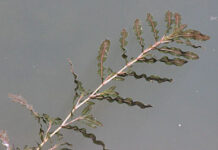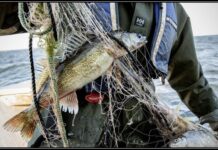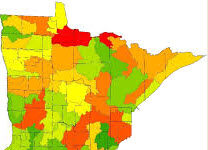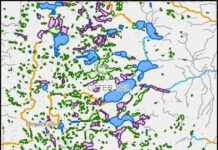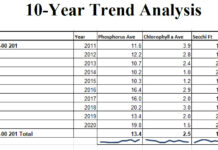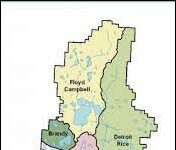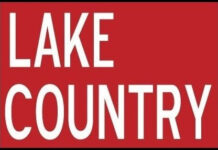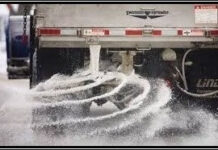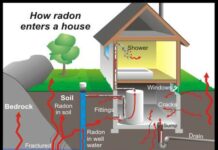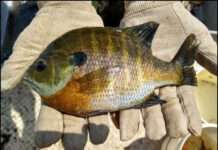For more information: [email protected]
See Lake Improvement Districts – Questions and Answers on the MN DNR website
Lake Improvement Districts – Questions and Answers
1. What is a Lake Improvement District (LID)?
A LID is a local governmental unit, a political subdivision, established by resolution of a county board, city council or by the commissioner of the department of natural resources. A LID allows for greater local involvement in lake management activities.
2. What authorities does a LID have?
In its resolution establishing a LID, the county board delegates specific authorities to the LID. Each LID will likely be granted different levels of authority depending upon existing problems and proposed activities. Some of these may include the right to:L
- Apply for and comply with DNR and other agency and local permits and policies required for specific lake management projects;
- Undertake lake research projects;
- Conduct programs of water improvement and conservation;
- Serve as local sponsor/recipient for state and federal projects or grants;
- Maintain public beaches, docks and other public facilities;
- Regulate water surface use;
- Provide and finance certain local governmental services within the LID;
- Implement a water monitoring program.
Projects and activities undertaken by a LID must comply with all local, state and federal regulations. Additionally, a lake improvement district may not undertake improvement projects on any body of water unless public access is available to that lake.
3. Who assumes responsibilities for the actions of a LID?
The LID assumes all legal responsibilities for activities undertaken by the LID. In the event a district is terminated or a district fails to meet its obligations, its responsibilities and liabilities pass to the county that established the district. The LID is also responsible for preparing an annual report to the county board with a copy to the DNR.
4. Who runs the LID?
A
LID is managed by a board of directors consisting of from 5 to 9 members. All
directors must be property owners in the district, and a majority of the
directors must be residents of the district. The initial board of directors is
appointed by the county board. The number, qualifications and terms of office
are also specified by the county board. Vacancies are filled by a majority vote
of the property owners attending the annual meeting. Directors may be compensated,
but only as decided by the property owners at the annual meeting.
5. Besides electing directors, what else happens at the annual meeting?
Each LID must have an annual meeting of property owners. This meeting must be held during July or August unless changed by majority vote at the previous annual meeting. Written notice of the meeting must be mailed to all property owners within the district, the county board and DNR at least 10 days prior to the meeting. In addition to electing new directors, those present at the annual meeting must:
- Approve the district budget for the upcoming year
- Approve or disapprove any project costing the district more than $5,000
- Discuss other district activities
6. How are LID activities funded?
A LID does not have any taxing authority of its own. Rather, the county board specifies the funding arrangement when it establishes the LID. Typically, a LID must pass its budget recommendations through the county board for approval and actual collection. To finance LID projects, services and general administration, a county may:
- Assess costs to benefited properties;
- Impose service charges;
- Issue general obligation bonds;
- Levy an ad valorem tax solely on property within the district; or
- Any combination of the above.
A LID can also be the recipient of grants from state and federal agencies and private foundations.
7. How is a LID established?
There are two ways in which a LID may be established:
- By petition of property owners within the proposed district; or
- By county board resolution.
Of the two, the petition process is the more common procedure. A petition requesting the formation of a LID must be signed by a majority of the property owners in the proposed district. The petition is addressed to the county board and filed with the county auditor. The county auditor verifies the signatures on the petition and notifies the county board. A public hearing is held and the county board establishes its findings to grant or deny the LID and sets the effective date for the LID to begin.
In
lieu of a petition signed by a majority of the property owners, the county
board may choose to initiate the establishment of a LID by itself. The board
adopts a resolution declaring its intent to establish a LID. A public hearing
is held, and the decision is made.
8. How are district boundaries selected?
Selecting workable district boundaries can be one of the most difficult and confusing aspects of establishing a LID. The statute states that district boundaries “shall beencouraged to be as consistent as possible with natural hydrologic boundaries.”District boundaries should include a sufficient area of the lake’s watershed for the LID to develop and implement solutions to identified problems. Water quality and lake level concerns are often influenced by activities in the lake’s watershed. If a LID is concerned about deteriorating water quality and frequent algal blooms, it should not only examine the immediate surrounding area, but the amount and quality of runoff reaching the lake.
In other situations, the petitioners may wish to establish a LID to undertake activities that only affect the shoreline properties. The proposed activities may include regulating water surface use, providing public water and sewer service to shoreline properties and constructing and maintaining public docks, beaches or fishing piers. In summary, the proposed district boundaries should be consistent with the goals of the LID.
CONTENTS OF PETITION OR COUNTY BOARD RESOLUTION*
A petition or county board resolution must generally contain the same types of information. Both indicate the general structure the LID should take (e.g., number of directors and district boundaries) as well as information relating to the need for and appropriateness of the LID. Specifically, the petition or resolution should include:
- Name of proposed district;
- Number of directors;
- Map showing district boundary and a statement demonstrating the appropriateness of the boundaries as they relate to the purposes of the district;
- Method of financing district operations;
- Statement of lake problems;
- Proposed water and related land management programs to address lake problems;
- Identification of potential adverse impacts of proposed district programs;
- Adequacy and ownership of public access including public lands and beaches; and
- Estimate of the total assessed valuation of property within the proposed LID.
A copy of the petition or resolution must be forwarded to the DNR and Pollution Control Agency for review and preparation of an advisory report prior to the public hearing.
*Minimum guidelines and requirements for the formation of LIDs are spelled out by Minnesota Rules Part 6115.0900 – 6115.0980. These rules provide specific guidance on the content and issues to be addressed by the petition or county board resolution, and the details of the DNR advisory report.
DNR ADVISORY REPORT
The
DNR advisory report provides the local government a map of the immediate
watershed and comments on the proposed LID based on its expertise and
coordination with PCA that addresses local need, appropriateness of proposed
boundaries, technical feasibilities, adequacy of planning, monitoring and
coordination with other districts.
PUBLIC HEARING
A public hearing must be held to discuss the merits of establishing a LID. At least 21 days before the public hearing, the county board must notify the DNR, PCA, town boards and all other local and regional governmental units and special districts within the proposed district. In addition, the county must make a “reasonable attempt” to notify all property owners within the proposed district of the pending resolution or petition and the public hearing. A “reasonable attempt” includes:
- Mailing a notice to last known address of each landowner;
- Publishing notice in two successive issues of the local newspaper; and
- Posting notices in public buildings.
At the public hearing the DNR advisory report is read into the record. All interested individuals may present testimony either for or against the establishment of the LID. Individuals may also present evidence suggesting how a property would be benefited or affected by the establishment of the district. The county board establishes its findings and the LID is either approved or denied.
ESTABLISHMENT
If initiated by a petition, the county board must act within 30 days of the public hearing to either establish or deny the request to form a LID. If established, the county board must publish the order in the county’s official newspaper as well as notify the secretary of state, DNR and PCA. In the order establishing the LID, the county board may modify part or all of the petition relating to district boundaries, functions, financing or organization.
If the establishment is initiated by a county board resolution, there is no time constraint under which the board must act following the public meeting.
REFERENDUM
Regardless how a LID has been initiated and before the effective date of its establishment, opposed property owners within the proposed district may petition for a referendum. If 26% of the property owners within the proposed district petition for a referendum, the county board must stay the establishment of the LID and hold a special election. The special election is held within the proposed district during July or August. The county auditor certifies the election results. If a majority of those property owners voting vote no, the establishment of the district is denied.
TERMINATION
A
LID may be terminated by a county board upon the initiation of a petition
signed by a majority of the property owners within the district requesting it.
There is a public hearing and the board decides whether the district should
continue or not.

2019 Minnesota Statutes
CHAPTER 103B. WATER PLANNING AND PROJECT IMPLEMENTATION
| 103B.501 | LAKE IMPROVEMENT DISTRICTS. |
| 103B.505 | DEFINITIONS. |
| 103B.511 | ADMINISTRATION BY COMMISSIONER. |
| 103B.515 | INITIATION AND ESTABLISHMENT BY COUNTY BOARD. |
| 103B.521 | INITIATION BY PETITION AND ESTABLISHMENT BY COUNTY BOARD. |
| 103B.525 | ESTABLISHING DISTRICT IN MORE THAN ONE COUNTY. |
| 103B.531 | CREATION BY COMMISSIONER OF NATURAL RESOURCES. |
| 103B.535 | ORDER ESTABLISHING DISTRICT. |
| 103B.541 | PUBLICATION AND EFFECTIVE DATE. |
| 103B.545 | REFERENDUM ON ESTABLISHMENT. |
| 103B.551 | BOARD OF DIRECTORS. |
| 103B.555 | FINANCING. |
| 103B.561 | VOTING BY JOINT COUNTY BOARDS. |
| 103B.565 | ENFORCING ORDINANCES. |
| 103B.571 | ANNUAL MEETING OF DISTRICT. |
| 103B.575 | EXPANDING LAKE IMPROVEMENT DISTRICT. |
| 103B.581 | TERMINATION. |
2019 Minnesota Statutes
| LAKE IMPROVEMENT DISTRICTS Rules | |
|---|---|
| 6115.0900 | PURPOSE. |
| 6115.0910 | SCOPE. |
| 6115.0920 | DEFINITIONS. |
| 6115.0930 | SEVERABILITY. |
| 6115.0940 | GOALS FOR LAKE IMPROVEMENT DISTRICTS. |
| 6115.0950 | ELIGIBILITY FOR LAKE IMPROVEMENT DISTRICTS. |
| 6115.0960 | CRITERIA AND STANDARDS FOR ESTABLISHMENT OF LAKE IMPROVEMENT DISTRICTS. |
| 6115.0970 | CREATION OF LAKE IMPROVEMENT DISTRICT. |
| 6115.0980 | ADMINISTRATION OF LAKE IMPROVEMENT DISTRICTS. |

